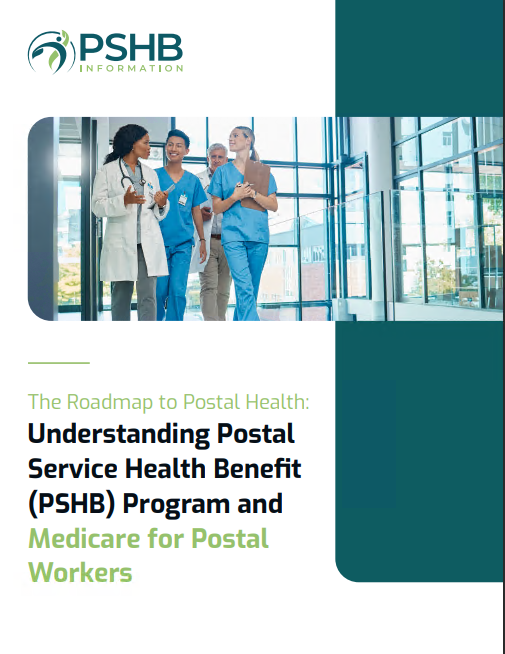Key Takeaways
-
Medicare Part A plays a crucial role in covering inpatient hospital care, skilled nursing facilities, and hospice services, which are significant for PSHB members who also qualify for Medicare.
-
Understanding Medicare Part A benefits can help you maximize your health coverage and coordinate it with your PSHB plan for more comprehensive care.
Breaking Down Medicare Part A: What It Covers
Medicare Part A, often referred to as hospital insurance, is a cornerstone of healthcare for many Americans. If you’re a Postal Service Health Benefits (PSHB) enrollee and Medicare-eligible, understanding Part A is essential to optimizing your coverage. This portion of Medicare primarily focuses on inpatient care and related services, making it a significant asset for your overall healthcare needs.
Inpatient Hospital Care
Medicare Part A covers inpatient hospital stays, which include the following:
-
Semi-private rooms
-
Meals
-
General nursing
-
Drugs as part of your inpatient treatment
-
Other hospital services and supplies
For 2025, you’ll pay a deductible of $1,676 per benefit period for hospital stays under Part A. After the deductible, coverage extends to the first 60 days of your stay with no coinsurance. From day 61 to day 90, daily coinsurance is $419, and for lifetime reserve days, it increases to $838 per day. These costs highlight the importance of coordinating your PSHB plan with Medicare to reduce out-of-pocket expenses.
Skilled Nursing Facility (SNF) Care
Part A also covers short-term stays in skilled nursing facilities. These are for recovery after a hospital stay of at least three days and include services such as rehabilitation and medical monitoring. Medicare covers the first 20 days at no cost to you, but from days 21 through 100, there’s a daily coinsurance of $209.50.
Hospice Care
If you’re terminally ill, Medicare Part A provides hospice care to support your comfort and quality of life. This includes:
-
Pain relief and symptom management
-
Medical services
-
Grief counseling for families
Hospice care under Part A usually comes with minimal costs, ensuring that financial concerns don’t add stress during challenging times.
Eligibility and Enrollment: What You Need to Know
Medicare Part A is available to most people aged 65 or older, as well as to certain younger individuals with disabilities or specific medical conditions. Here’s how eligibility works:
-
If you’ve worked and paid Medicare taxes for at least 10 years (40 quarters), you qualify for premium-free Part A.
-
If you have fewer than 40 quarters, you’ll pay a monthly premium of either $284 or $518, depending on your work history.
How Enrollment Works
Enrollment in Medicare Part A can be automatic or manual:
-
Automatic Enrollment: If you’re already receiving Social Security or Railroad Retirement Board benefits, you’ll be automatically enrolled in Medicare Part A when you turn 65.
-
Manual Enrollment: If you’re not receiving these benefits, you’ll need to apply for Medicare during your Initial Enrollment Period (IEP). This 7-month window includes the three months before your 65th birthday, your birthday month, and the three months following it.
How Part A and PSHB Work Together
If you’re enrolled in both Medicare Part A and a PSHB plan, you’re in a unique position to coordinate benefits effectively. Medicare Part A becomes the primary payer for inpatient services, meaning it pays first. Your PSHB plan then acts as the secondary payer, covering costs that Medicare doesn’t fully handle, such as coinsurance or deductibles.
Why Coordination Matters
Coordinating your PSHB plan with Medicare Part A can:
-
Reduce or eliminate out-of-pocket costs for hospital stays and skilled nursing care
-
Offer additional coverage for services not included under Medicare
-
Simplify the claims process by ensuring that both plans work together
Steps to Ensure Coordination
-
Inform your PSHB plan that you’re enrolled in Medicare.
-
Confirm which services are covered by each plan.
-
Keep track of billing and reimbursement processes to avoid overpaying.
Making the Most of Your Medicare Part A Benefits
To fully leverage your Medicare Part A benefits as a PSHB member, consider the following tips:
Plan Ahead for Costs
Understanding the cost-sharing structure of Part A helps you anticipate expenses. Knowing your deductibles and coinsurance amounts ensures there are no surprises during hospital stays or skilled nursing care.
Use Preventive Services
While Part A focuses on inpatient care, using preventive services under Medicare Part B can keep you healthier and reduce your need for hospitalization. This proactive approach saves money and improves your overall well-being.
Review Your Annual Benefits
Every year, Medicare and PSHB plans may update their benefits, costs, and coverage terms. Stay informed by reviewing your Annual Notice of Change (ANOC) letter to ensure your current plan still meets your needs.
What Part A Does Not Cover
It’s essential to recognize the gaps in Medicare Part A coverage. This helps you plan ahead and avoid unexpected medical bills. Common exclusions include:
-
Private-duty nursing
-
Most prescription drugs (covered under Part D or PSHB)
-
Custodial care in nursing homes
-
Long-term care
-
Services outside the United States
By combining Medicare Part A with your PSHB plan and other Medicare options like Part B and Part D, you can fill these gaps and create a comprehensive coverage strategy.
Key Deadlines and Enrollment Periods
Missing enrollment deadlines can result in penalties and coverage gaps. Here are the timelines you should know:
-
Initial Enrollment Period (IEP): A 7-month window around your 65th birthday to sign up for Medicare.
-
Special Enrollment Period (SEP): If you’re still working past 65, you can enroll in Medicare without penalties when you retire or lose employer coverage.
-
General Enrollment Period (GEP): Runs annually from January 1 to March 31 for those who missed their IEP, with coverage starting July 1.
Timely enrollment ensures you avoid late penalties and maintain seamless healthcare coverage.
Enhancing Your Health with a Coordinated Approach
By aligning Medicare Part A with your PSHB plan, you can access more comprehensive care while minimizing costs. This coordination allows you to focus on your health and well-being rather than worrying about financial burdens or coverage gaps.
Take advantage of the strengths of both Medicare and PSHB by understanding your benefits and planning your healthcare strategy accordingly. Staying informed and proactive ensures you’re making the most of what these programs have to offer.












